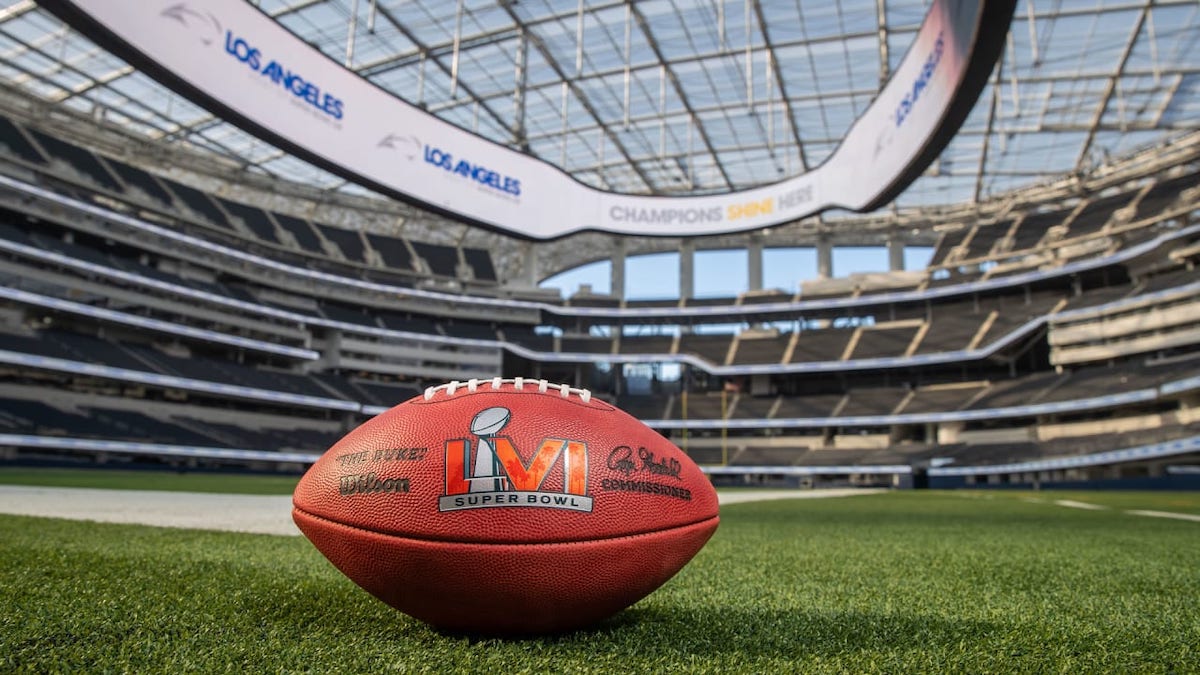The history of the National Football League is chalked full of games that we consider to be the best of all time. The Super Bowl, in particular, is among many of those games and historically has featured some of the best performances and most memorable endings that even Hollywood would not have been able to dream up. With that in mind—and ahead of Super Bowl LVI between the Cincinnati Bengals versus the Los Angeles Rams—let’s take a look back at past iconic Super Bowl matchups and see which ones are deserving of their own Hollywood adaptation.
The Rules
- How The Teams Arrived to Super Bowl: Dominance during the regular season or playoff run
- Player and Team Performances: I.E., memorable plays or record setting performances as well as any overtime and last second regulation finishes
- Upsets Are a Premium: Blowouts less so but only if it was uniquely significant
- Number of Hall of Fame Players: After all, the game is played by players.
- Games That Have Previously Adapted for a Film Won’t Be Considered: Sorry American Underdog and Super Bowl XXXIV, no spot for you on this list
Get Your Popcorn Ready
Super Bowl V: Baltimore Colts vs Dallas Cowboys | January 17th, 1971
Don’t let the final score of 16–13 fool you, this game would go down in NFL infamy as “The Blunder Bowl” thanks in part to the 11 turnovers committed by both teams and a whopping 10 penalties by the Cowboys. The Baltimore Colts would go onto win the game, and to add insult to injury, Cowboys linebacker Chuck Howley was named the game’s MVP. This was the first (and so far, only) time that a player from the losing team was named MVP. While the game featured 14 players who would eventually be enshrined in the Hall of Fame, it was decided by a 32-yard game winning field goal from Colts rookie kicker Jim O’Brien during the final seconds of regulation.
Super XLIV: Indianapolis Colts vs New Orleans Saints | February 7, 2010
The New Orleans Saints were America’s underdog in this game. Only 4 years removed from the Superdome being flooded and the team displaced due to Hurricane Katrina, the Saints hired coach Sean Payton, signed free agent quarterback Drew Brees and assembled one of the most high-powered offenses in NFL history. On the other side of the field was the Indianapolis Colts, led by Peyton Manning and going for his second Super Bowl victory in 4 years, were the NFL’s best team in the 2009 regular season thanks to an offense full of playmakers and a defense that made getting after the quarterback look like child’s play. The final score of 31 – 17 for the Saints doesn’t tell the whole story of the game; Heading into the second half down 6 – 10, the Saints led off the half by attempting and recovering an onside kick that led to a touchdown pass to make the score 13 – 10. The Colts would answer with their own touchdown drive and the teams would trade points until the fourth quarter when the Saints would score a two-point conversion following another touchdown pass from Brees. On the ensuing drive, it looked like Manning would engineer another dazzling comeback until Saints cornerback Tracy Porter intercepted the ball and returned it 74 yards for the game sealing touchdown. It was a surprising victory that meant more to a city than recent Super Bowl victories.
Super Bowl XXXII: Green Bay Packers vs Denver Broncos | January 25, 1998
The subplots heading into this game were plentiful; The Packers were going for back-to-back Super Bowl victories with Hall of Fame quarterback Brett Favre leading the league in touchdown passes and became the first player to win NFL MVP three times. Green Bay also featured an incredible defense with defensive lineman Reggie White leading the team in sacks and safety LeRoy Butler leading in interceptions. The Broncos on the other hand, were not as successful in the Super Bowl as their opponent. The team had managed to make it to the big game four times before this game, they had lost each of those appearance with three of those occurring during Hall of Fame quarterback John Elway at the helm for those losses. Under new head coach Mike Shanahan, the offense was rebuilt into one of the best rushing attacks in the NFL with Terrell Davis leading the league that year with over 1,700 yards on the ground and 15 rushing touchdowns. The game’s final score was 31 – 24 for the Broncos but it featured one of the best performances from Davis as he rushed for 157 yards and a record three touchdowns. He also turned in this performance while suffering from blinding migraines and has remarked numerous how there were several moments where he couldn’t see during the game. It also featured one of the most memorable plays in the game’s history as Elway scrambled for a first down and was brought by a helicopter style tackle and the postgame became even more memorable as Elway was the first person to hold the Lombardi Trophy after owner Pat Bowlen declared “This one’s for John” recognizing just how important Elway was to the Broncos’ success.
Super Bowl XIII: Dallas Cowboys vs Pittsburgh Steelers | January 21, 1979
It’s become all too easy to dunk on the Cowboys for their recent lack of postseason success but it’s worth noting that the modern NFL owes a great deal to the success of the Cowboys during the late 60’s and 70’s as the Cowboys and the Pittsburgh Steelers played host to one of the best rivalries in the history of the sport. This game featured a whopping 25 Hall of Fame players and was the first rematch from a prior Super Bowl (Super Bowl X that had the Steelers emerging victorious) as Dallas was attempting to repeat as champions and had Pittsburg looking to cement the Steel Curtain as the dynasty of the time. The Steelers absolutely dominated the playoffs but were considered a three-point underdog to the Cowboys as they also rolled past their opponents on their way to a legendary Super Bowl matchup. Hall of Fame quarterbacks Roger Staubach and Terry Bradshaw combined to throw for 546 yards and 7 touchdowns as Pittsburgh emerged victorious with a final score of 35 – 31.
Super Bowl III: New York Jets vs Baltimore Colts | January 12, 1969
While this game has become more famous for Joe Namath’s guarantee that his Jets would win the game, what has become lost to time is the effect of the AFL – NFL merger that would change the landscape of the game forever. While the AFL and the merger is outside the scope of this particular article, it is worth noting that the AFL was looked down upon as sort of the red headed step-child of the NFL. It was a league that while revolutionary was seen as second fiddle to the high-powered NFL and prior to the merger, the Super Bowl would feature the best team from the NFL and the AFL going head-to-head to decide the world champion. While the game itself features no memorable plays in particular except for the image of Namath walking off the field while waving a finger in the air, it did feature an incredible performance from Jets running back Matt Snell who ran for a then record 121 yards with a touchdown and should have been named the game’s MVP over Namath. It also featured an uncharacteristically off day from Hall of Fame quarterback Johnny Unitas that sank their chances of beginning a dynasty in the early days of the modern NFL.
Super Bowl XXXVI: St. Louis Rams vs New England Patriots | February 3, 2002
For all the Tom Brady haters, it would have been an impossible task to not consider his games especially when the man has played in a record 10 Super Bowls but there’s nothing better than the first one and this game featured incredible subplots. The Rams featured “The Greatest Show on Turf” and one of the best offenses in NFL history thanks to Hall of Fame players Kurt Warner, Marshall Faulk and Isaac Bruce (Torry Holt should and will be elected at some point) and the Patriots had gotten lucky during the playoff’s thanks in part to the “Tuck Rule” game against the Oakland Raiders. Personally, this is the first game I can remember watching and specifically Bill Belichick’s master class in defensive play calling as well as John Madden’s notion that the Patriots should run out the clock and let the game go to overtime until Tom Brady took the field for a final fourth quarter drive. Brady went 6 for 8 on that drive, with no timeouts, to set up Adam Vinatieri’s now legendary game winning field goal as time expired to give the Patriots their first Super Bowl victory and begin the legend that became Tom Brady.
Super Bowl LII: Philadelphia Eagles vs New England Patriots | February 4, 2018
At this point in history, Tom Brady with head coach Bill Belichick and the New England Patriots had cemented themselves as the best head coach/quarterback duo in league history and had won five Super Bowls by now but were facing the NFC’s best team that season in the Philadelphia Eagles under head coach Doug Pederson. While the Eagles were riding high with an 11 – 2 record, All-Pro quarterback Carson Wentz suffered a torn ACL and forced backup quarterback Nick Foles to lead the team through the remainder of the regular season and postseason. While Foles and the Eagles had embraced their role as underdogs, they were going up against the defending champions who had pulled off the greatest comeback in NFL history in the previous year’s Super Bowl. Both teams traded points constantly throughout the game with neither team giving up much ground and the game would set an NFL record for the offensive yards gained during a single game along with the fewest punts. In a game that featured all the offense anyone could want, the deciding play game down to a strip sack of Tom Brady by Eagles linebacker Brandon Graham that turned into an Eagles field goal and forced the Patriots to use all of their timeouts. However, the Patriots had the ball one last time and it looked like Tom Brady was going to summon whatever magic he’d used many times before in his career and his final Hail Mary pass fell incomplete in the end zone as the Eagles celebrated their first Super Bowl victory.
Super Bowl LI: New England Patriots vs Atlanta Falcons | February 5, 2017
28 – 3, nuff said



